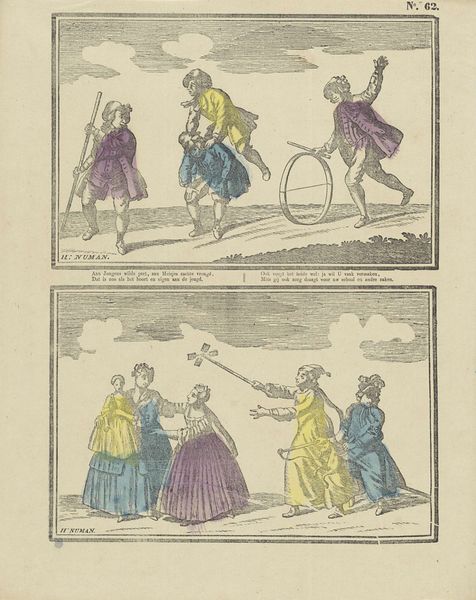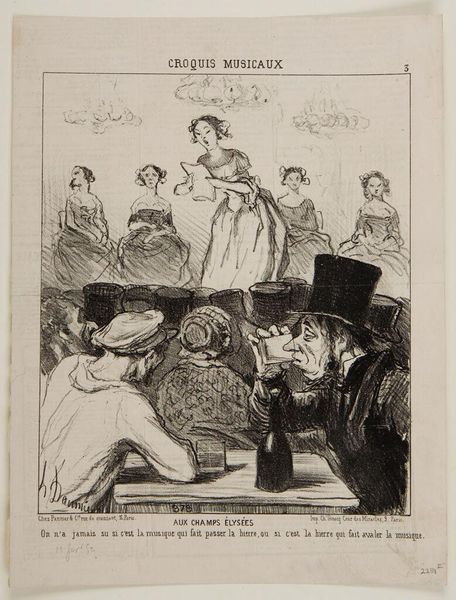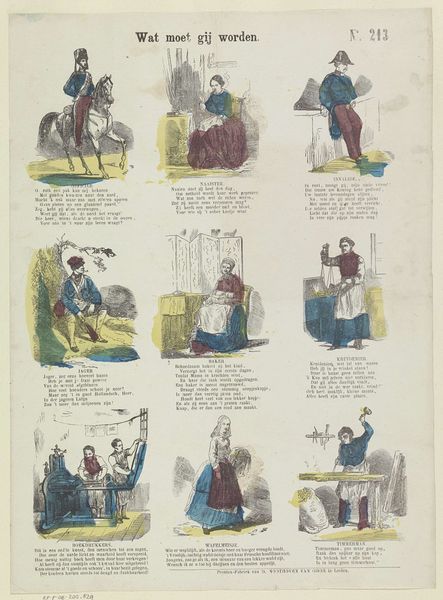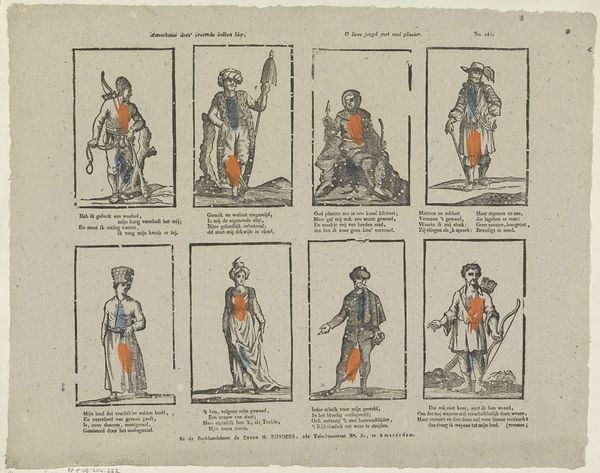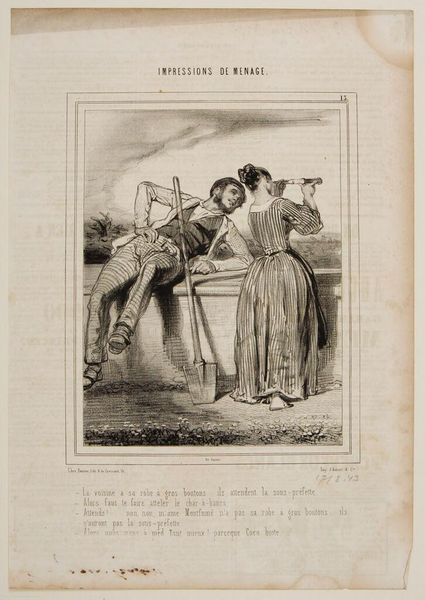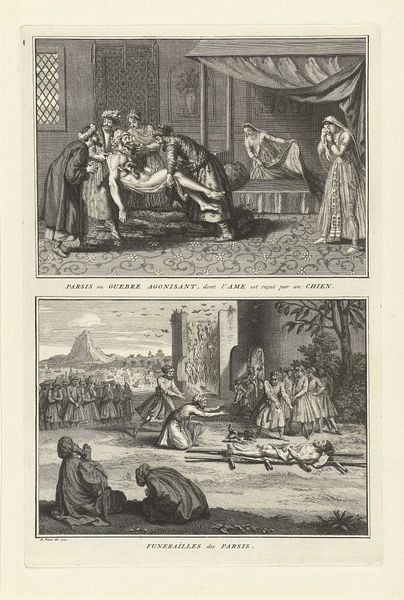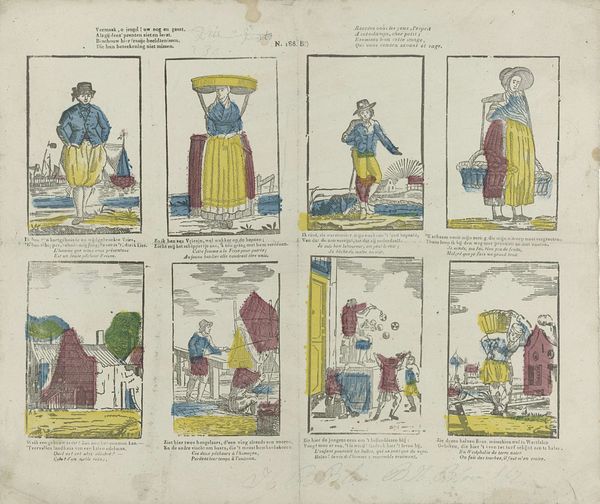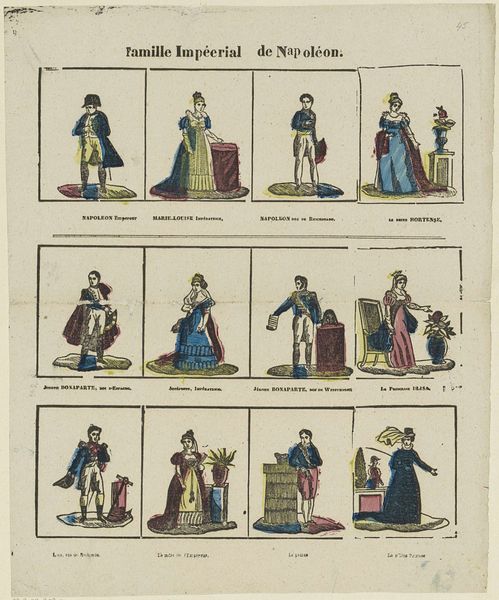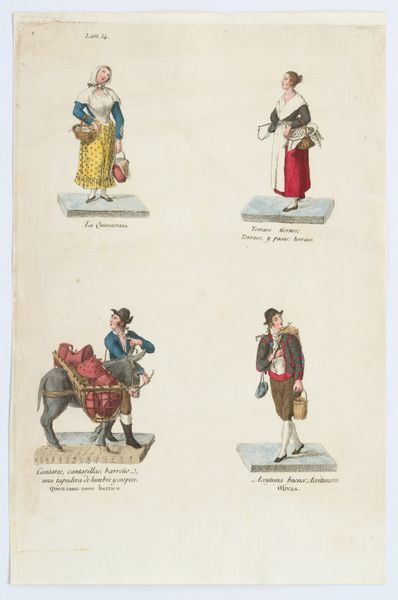
Dimensions: height 403 mm, width 324 mm
Copyright: Rijks Museum: Open Domain
Curator: Right, let’s turn our attention to this print, "Spelende Kinderen," by Hermanus Numan. It was made sometime between 1761 and 1804, and it's an engraving. The work uses rather delicate lines and pastel colors to convey its message, at least according to the title! Editor: You know, my first impression is one of subtle mischief! There's something slightly satirical about it. It hints at a complex narrative behind those "playing children," doesn’t it? A mix of innocence and, dare I say, manipulation? Curator: Precisely! The printmaking process here is quite revealing. Notice how the lines are meticulously etched to create form, but the hand-coloring suggests a layer of applied artistry – almost a form of early mass production appealing to a broad, literate audience. Editor: It reminds me a little bit of stagecraft; it feels staged rather than candid. And what about the text beneath each panel? Almost like morals extracted from the behavior above? Curator: Indeed. These accompanying texts, they speak to diligence and considering the end before the beginning, respectively, providing societal guidance. It encourages the viewers to see parallels between childhood games and adult life. Think of it as the artist subtly criticizing societal follies of the time through observations of youth and play. Editor: I love how you place the art into the world. Considering the laborious act of producing a print with a message... I wonder who was its original consumer and its reach in 18th century Amsterdam? What was the purpose of that object then? Curator: Exactly. Think about the burgeoning middle class and their desire for art. These prints were more affordable than paintings, but provided that element of visual enjoyment along with explicit guidance on proper behaviour. A confluence of enjoyment and moral instruction, if you like. Editor: Beautifully said. Looking closer, I notice a bit of the human hand's wabi-sabi, here. The fact it is printed emphasizes an art object for broader populations that at once is aesthetically pleasing, affordable and instructive, to some extent? In the modern times, you can only ask who gets to do art and whose labor it has depended on! It seems timeless! Curator: Indeed! This artwork highlights that timeless connection. There's a lasting value in reflecting upon labor and process within the context of artistic creation, allowing these narratives to persist across time and engage contemporary questions.
Comments
No comments
Be the first to comment and join the conversation on the ultimate creative platform.

